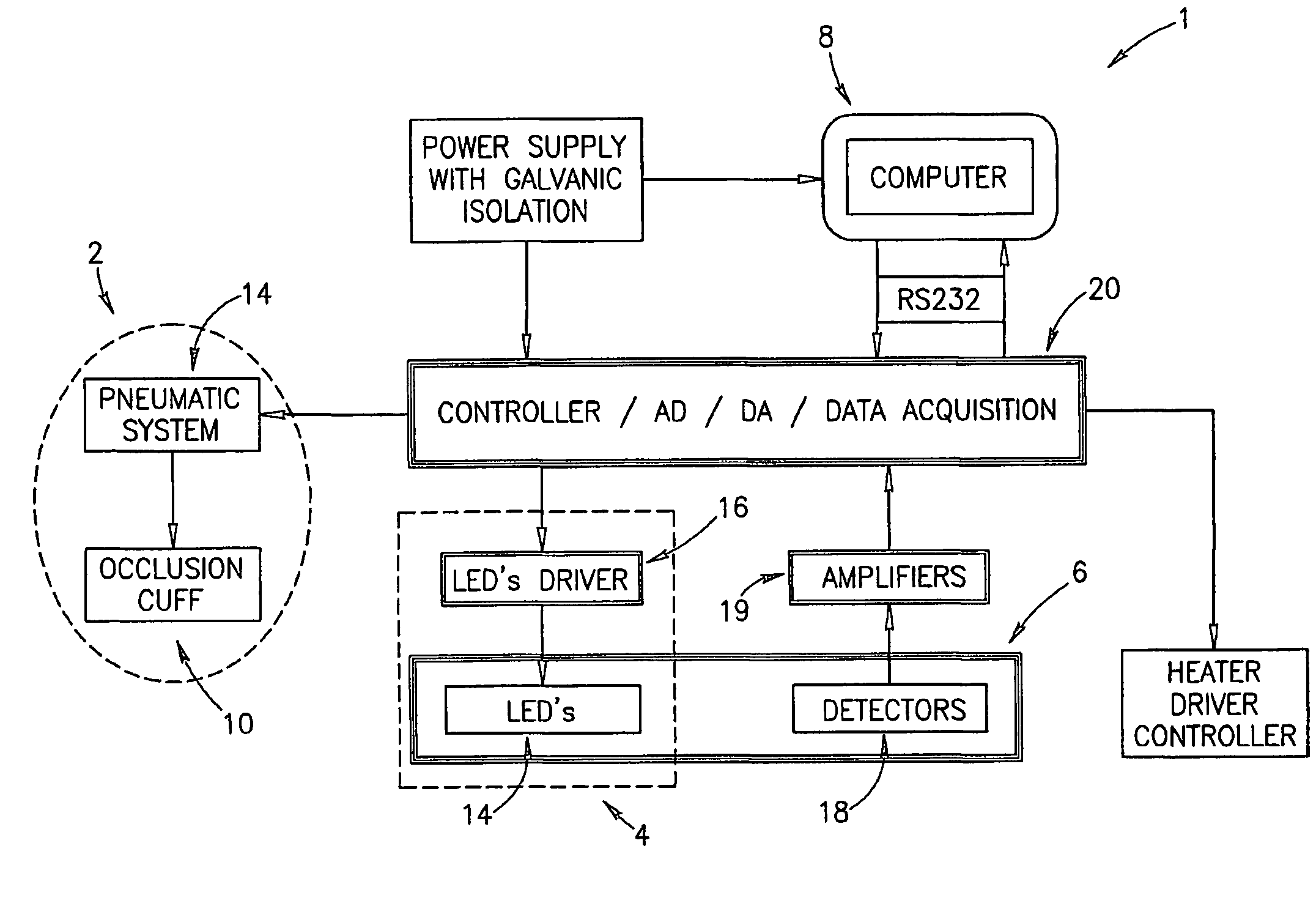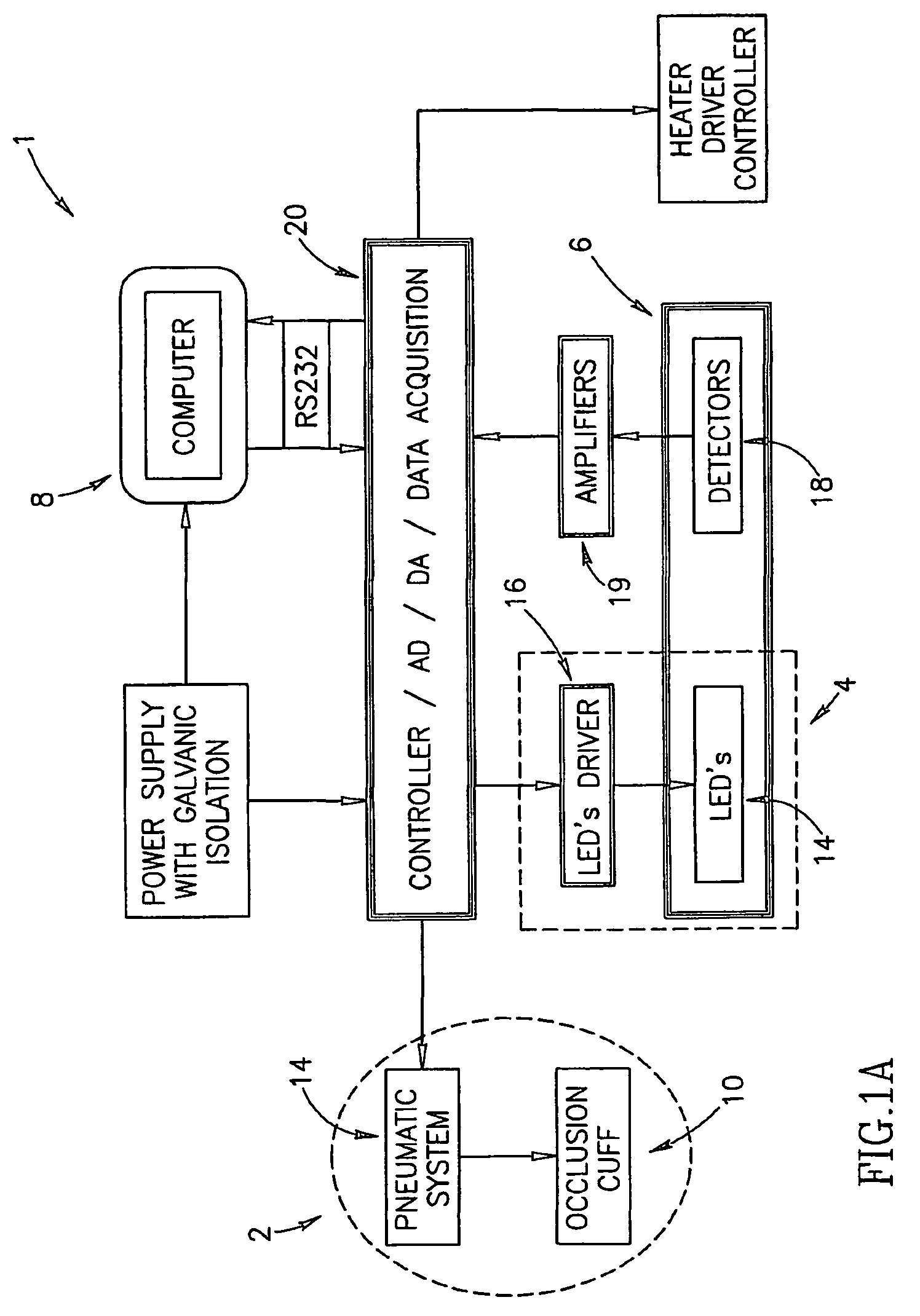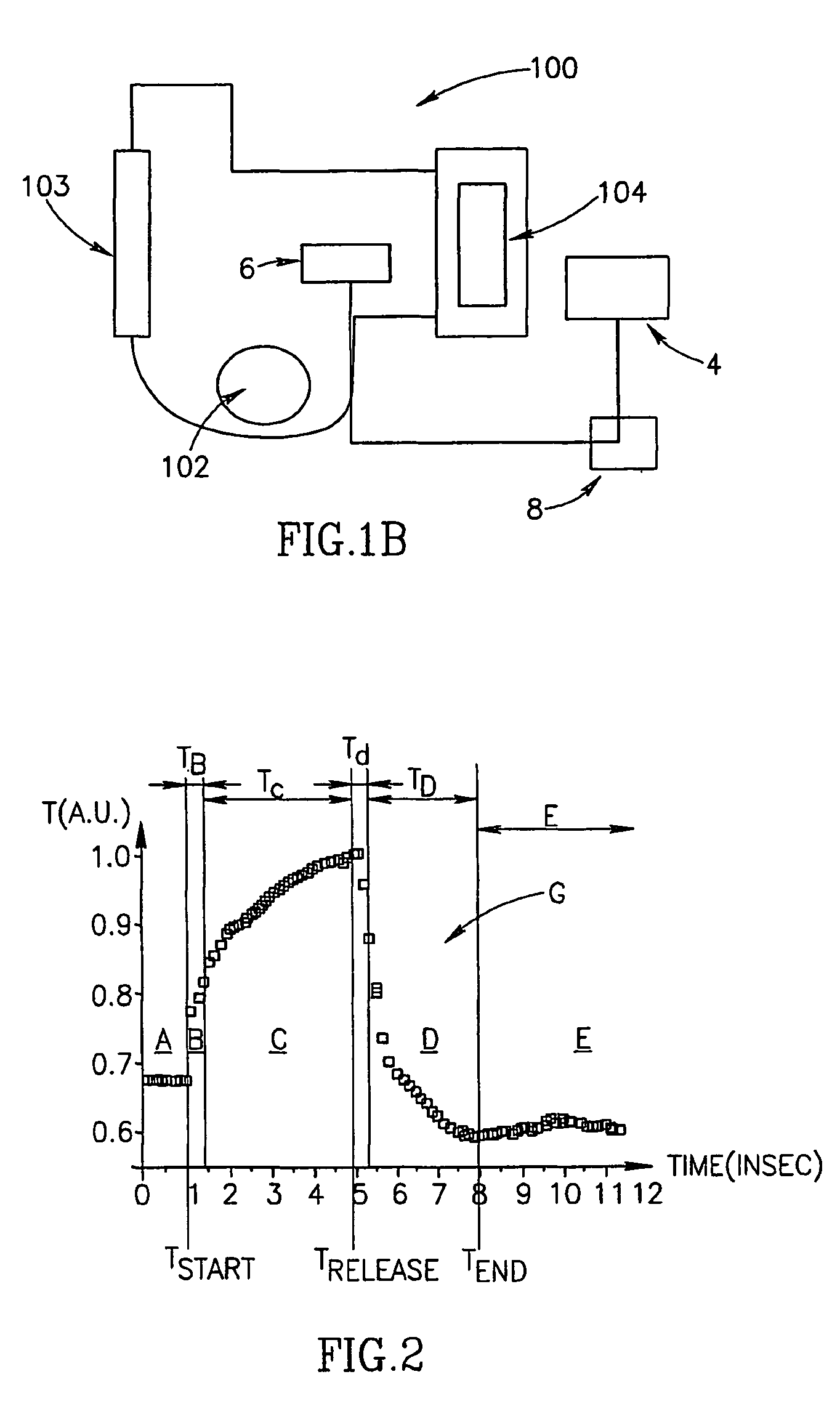Method of optical measurements for determining various parameters of the patient's blood
a technology of optical measurement and patient's blood, applied in the field of optical measurement techniques, can solve the problems of unpopular measurement, render the dc technique of optical measurement to be actually invasive, and relatively low signal-to-noise ratio
- Summary
- Abstract
- Description
- Claims
- Application Information
AI Technical Summary
Benefits of technology
Problems solved by technology
Method used
Image
Examples
Embodiment Construction
[0062]A method according to the present invention consists of applying optical measurements to the patient's blood while in the state of blood flow cessation, within a measurement region, by irradiating this region with at least two different wavelengths in the near IR or visible range, and detecting transmission signals as the functions of time during a predetermined time period. This can be implemented by applying over-systolic pressure to a location on the patient's organ so as to create the state of blood flow cessation, and applying the optical measurements to a location on the finger downstream of the pressurized location with respect to the direction of a normal blood flow (in vivo). Alternatively, the flow of a blood sample can be directed into a cuvette, and upon creating the state of blood flow cessation in the cuvette, the optical measurements are applied to the blood sample therein (in vitro).
[0063]FIG. 1a illustrates a block diagram of a measuring apparatus 1 for carryi...
PUM
 Login to View More
Login to View More Abstract
Description
Claims
Application Information
 Login to View More
Login to View More - R&D
- Intellectual Property
- Life Sciences
- Materials
- Tech Scout
- Unparalleled Data Quality
- Higher Quality Content
- 60% Fewer Hallucinations
Browse by: Latest US Patents, China's latest patents, Technical Efficacy Thesaurus, Application Domain, Technology Topic, Popular Technical Reports.
© 2025 PatSnap. All rights reserved.Legal|Privacy policy|Modern Slavery Act Transparency Statement|Sitemap|About US| Contact US: help@patsnap.com



